Press Conference
- HOME
- News
- Press Conference
- JAMA Press Conference September 2025
JAMA Press Conference September 2025
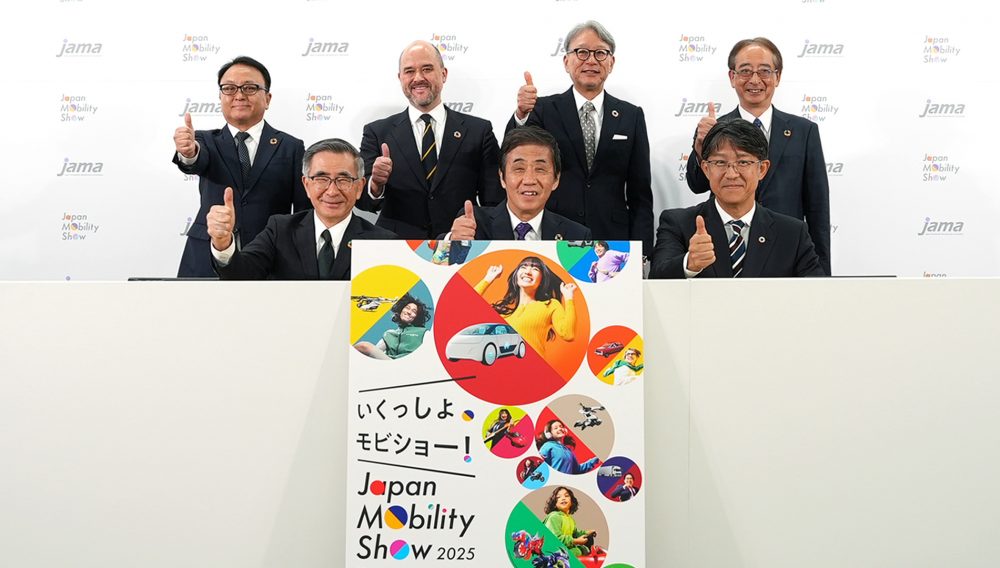
The Japan Automobile Manufacturers Association (JAMA) held a press conference on September 18, 2025.
Chairman Masanori Katayama (Isuzu), along with JAMA’s Vice Chairmen, commented on U.S.-Japan trade issues and explained JAMA’s requests for tax reforms for fiscal year 2026. They also shared their aspirations for the upcoming Japan Mobility Show 2025, which is set to open at the end of next month.
Full Archive of Press Conference
KATAYAMA Masanori, Chairman
(Chairman and Representative Director, CEO, Isuzu Motors Limited)
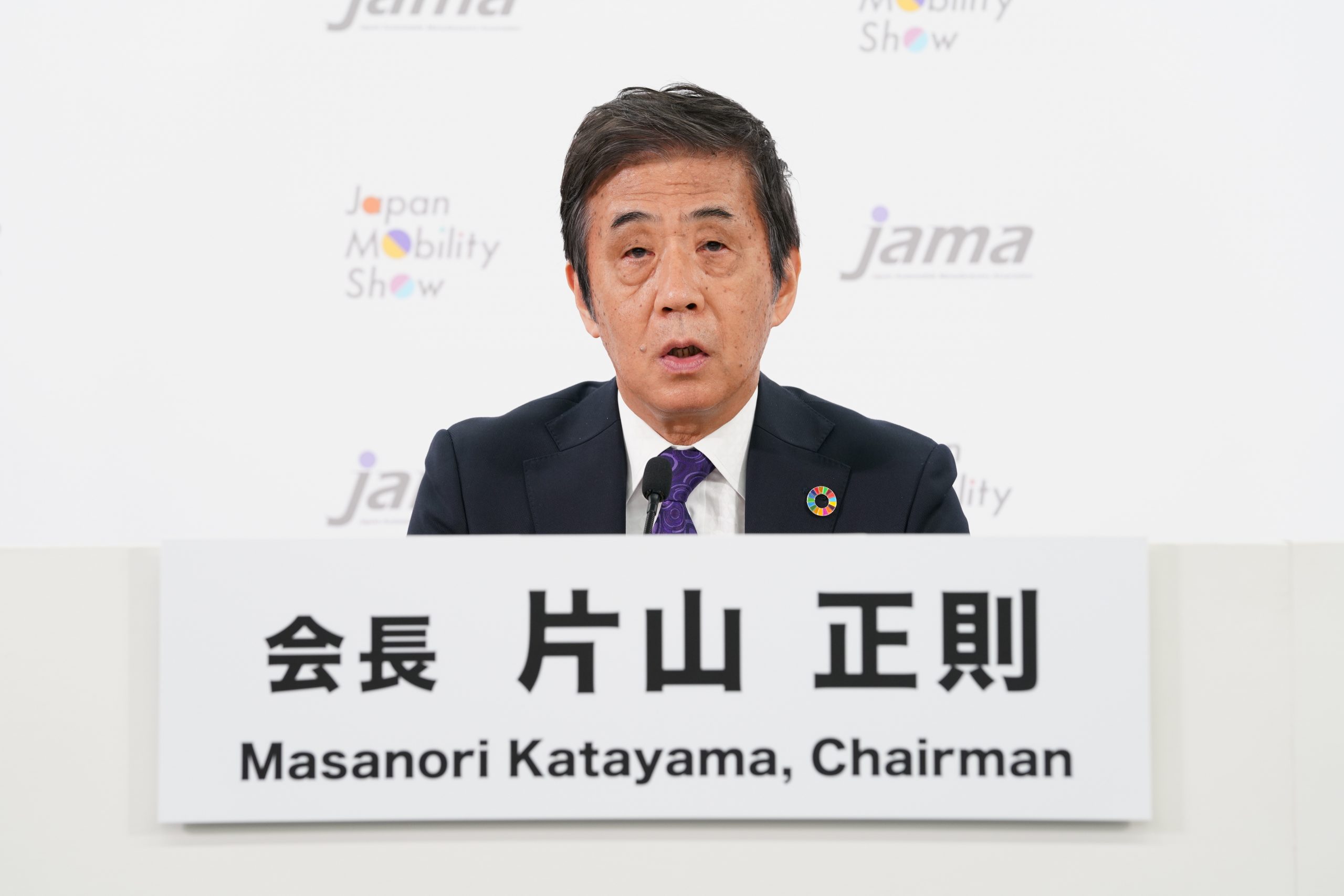
Since our last press conference in May, there have been significant developments in the global economy. Regarding Japan-U.S. trade issues, the U.S. government implemented additional tariffs of 25% on automobiles in April, followed by the same on auto parts in May.
Despite the wide range of items brought to the negotiating table, the Japanese government’s engagement in persistent and vigorous negotiations was unflagging. As a result, an agreement was successfully reached in July, including the automotive sector. I would like once again to express my sincere gratitude for these efforts.
Following this achievement, the newly agreed 15% tariff was not immediately applied. However, after its official announcement by the U.S. government in the Federal Register this month, the new tariff rate on automobiles and auto parts came into effect on September 16.
The 15% tariff rate applied to automobiles and auto parts is not unfavorable compared to the rates the U.S. imposes on other countries. I would like once again to thank all the officials concerned from both the Japanese and U.S. governments for their dedicated work.
Thanks to this agreement, the Japanese automotive industry—including its supply chain—has avoided a potentially devastating blow. However, the impact of tariffs on our industry remains significant, affecting not only automakers but the entire supply chain.
We strongly urge the Japanese government to continue discussions with the U.S. government towards establishing a fair and open trade environment based on free trade principles.
Next, regarding JAMA’s fiscal 2026 Tax Reform Request, I am pleased to inform you that it was deliberated and approved at today’s board meeting. The full contents will be published after this press conference, but today I would like to share with you our leading priorities for the next fiscal year.
As I mentioned earlier, the environment surrounding the automotive industry is undergoing dramatic changes. In order to maintain and enhance the competitiveness and employment base of the Japanese auto industry, it is essential to reinforce domestic production. This is an urgent challenge.
In a world of growing uncertainty, the most reliable and stable foundation we have is the domestic market—the demand within Japan itself. However, for automobile users in Japan, the vehicle tax system remains a significant burden, creating a major obstacle to a healthy domestic demand environment.
We aim to alleviate this burden and thereby secure the sustained and long-term expansion of domestic demand. In doing so, we hope to support Japan’s manufacturing base and the supply chain as a whole, and to reinforce the foundation of the entire industry.
In line with this intent, JAMA’s top-priority request this year is the total abolition of the Environmental Performance-Based Tax imposed at the time of vehicle acquisition.
We are also aware that discussions are underway regarding the elimination of provisional gasoline tax rates and their replacement with alternative funding sources. Some have suggested covering the shortfall by raising taxes on automobiles, but we strongly oppose such measures.
Shifting the burden from fuel taxes to vehicle taxation is completely misguided. JAMA firmly opposes any increase in the financial burden on automobile users.
Meanwhile, provisional tax rates are still in place for the automobile tonnage tax, and in view of the history of vehicle taxation in Japan, we believe it is only logical that the treatment of these provisional rates be included in the broader discussion.
In this year’s comprehensive review of taxes on automobiles, we urge policymakers to reach clear conclusions on these longstanding issues. Our hope is for a streamlined and less onerous tax structure that automobile users can understand and accept.
Next, I would like to touch upon the challenges currently facing our industry. At JAMA, we have identified seven key areas that require focused efforts to ensure that the automotive industry continues to be a core contributor to Japan’s economy.
Over the past two years, JAMA’s Chairman and Vice Chairmen have taken leadership roles in each of these areas, working intensively to drive progress in their respective areas of concern.
As a result, the term “Seven Challenges” has become widely recognized, even beyond the automotive industry. This has allowed us to engage in broad, cross-industry dialogue with many different stakeholders.
We are currently preparing to share updates on the progress of these efforts this fall, on the occasion of the Keidanren Mobility Committee meeting, where we will provide a comprehensive briefing to a broad range of industry representatives.
In parallel, we are also working to reform longstanding business practices in relation to such matters as pricing mechanisms and mold transaction terms, in order to promote fair trade across the entire automotive supply chain and accelerate a virtuous cycle of wage increases in the industry.
To that end, JAMA and the Japan Auto Parts Industries Association (JAPIA) have been engaged in deep and candid discussions on a twice-monthly basis, thereby building a strong foundation of trust. As part of these efforts, JAMA and JAPIA jointly issued earlier this month a letter to more than 400 member companies, which called for further promotion of fair trade practices to strengthen the competitiveness of the Japanese automotive industry.
Fair trade across the entire supply chain contributes to a healthy economic cycle for Japan as a whole, and JAMA and JAPIA are committed to working together on relevant issues, including wage increases, and so to fulfill our responsibilities.

In closing, I would like to talk about our industry’s largest event, the Japan Mobility Show, this year’s edition of which will open on October 30 (Official Ceremony Day) at Tokyo Big Sight.
Last week, we provided the media with an outline of the organizer’s program and, for the first time, an early preview of the exhibits from some participating manufacturers, highlighting the passion behind their efforts.
Mobility is more than just a means of transportation. It has the power to move people emotionally and shape memories and value in our lives. We believe in that power, and in these uncertain times we want to deliver hope for the future through this show.
This year, we are joining hands with a diverse range of industries to create an experience where visitors can step into and be awed by the bright future that mobility promises.
This year’s show will also put a spotlight on car and motorcycle enthusiasts, offering exciting content that will resonate with those who genuinely love vehicles.
We hope people of all ages will look forward to attending Japan Mobility Show 2025.
Today marks the final opportunity before the show for JAMA’s Chairman and Vice Chairmen to come together publicly to address you, their viewers.
Against the backdrop of the challenges we are facing as an industry and as a nation, JAMA’s Vice Chairmen, my colleagues, will now take a moment to personally share with you their special commitment and hopes for the Japan Mobility Show.
* General Public Days: Oct. 31 – Nov. 9
MIBE Toshihiro, Vice Chairman
(Director, President and Representative Executive Officer, Honda Motor Co., Ltd.)
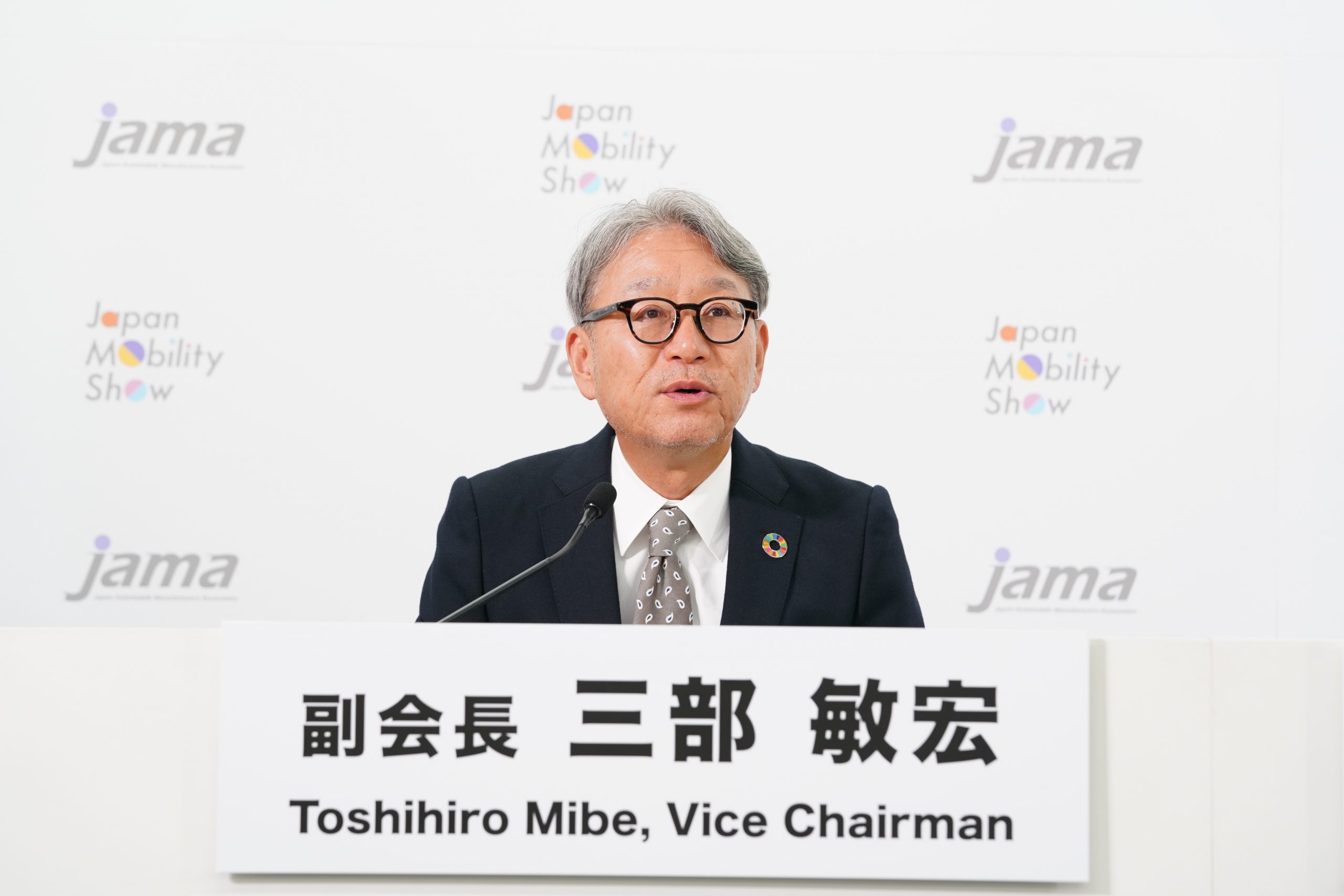
We are pleased to announce that Japan Mobility Show 2025 will be held at Tokyo Big Sight from October 30* through Sunday, November 9. With less than 50 days to go until the opening, anticipation is building.
The Japan Mobility Show, which was rebranded in 2023, enters its third year, following last year’s Japan Mobility Show Biz Week. Continuing the spirit of 2023, this year’s show is themed under the concept “Let’s explore an exciting future together.” This concept reflects our aspiration to spark excitement, encourage shared thinking, and create the future together.
Evolving from the Tokyo Motor Show, whose history extended over a period of nearly 70 years, the Japan Mobility Show has transformed into a co-creation platform-based showcase event. It brings together a wide range of participants with the aim of creating a vibrant and inspiring mobility-based society—not just through transportation, but also by solving societal challenges and generating new value.
This year, we have adopted the new catchphrase “Let’s go Mobishow!” We are preparing a variety of engaging programs that allow visitors to experience the exciting future brought about by a rich and inspiring mobility-based society. We look forward to welcoming many visitors to the event.

At the media briefing on September 10, we previewed part of the program. The show will revolve around three key themes: “#FUTURE,” “#CULTURE,” and “#CREATION.” In addition to the futuristic exhibitions that were popular in 2023, we are also placing greater emphasis on displays that showcase the past and present. We aim to create a mobility show that everyone will want to visit—whether you’re passionate about vehicles, fascinated by future lifestyles, an adult, a child, or even someone who’s never taken much interest in mobility before.
Furthermore, over 480 companies from Japan and overseas—a record high, exceeding that of 2023—are scheduled to participate. Each exhibitor will offer a variety of interactive experiences, so we hope you will look forward to what’s in store.

Following this general overview, I would like to share Honda’s plans for the show.
Our theme this year is: “Giving shape to dreams: Honda to exhibit a wide variety of mobility products and technologies for land, sea, and skies created by the power of dreams.” We are designing a stand where visitors can enjoy a world that goes beyond land-based mobility, extending to the sea and sky—reflecting Honda’s vision for the future of mobility.
One of the highlights is the life-size interior mockup of the HondaJet Elite II, which was well received at the 2023 show. Visitors will again be able to enter the cabin and experience its interior space firsthand.
In our press release issued at the end of August, we shared some early details about our exhibit lineup. If you’re interested, we encourage you to check it out.
Further updates on our exhibit will be released gradually, with the next announcement scheduled for the end of September. Please stay tuned.
This time, it’s not just about seeing—we want visitors to experience the expectations and possibilities of mobility from today into the future. We hope you’ll take this opportunity to experience how Honda continues to evolve its mobility through the power of dreams.
We look forward to seeing you at the show.
SUZUKI Toshihiro, Vice Chairman
(Representative Director and President, Suzuki Motor Corporation)
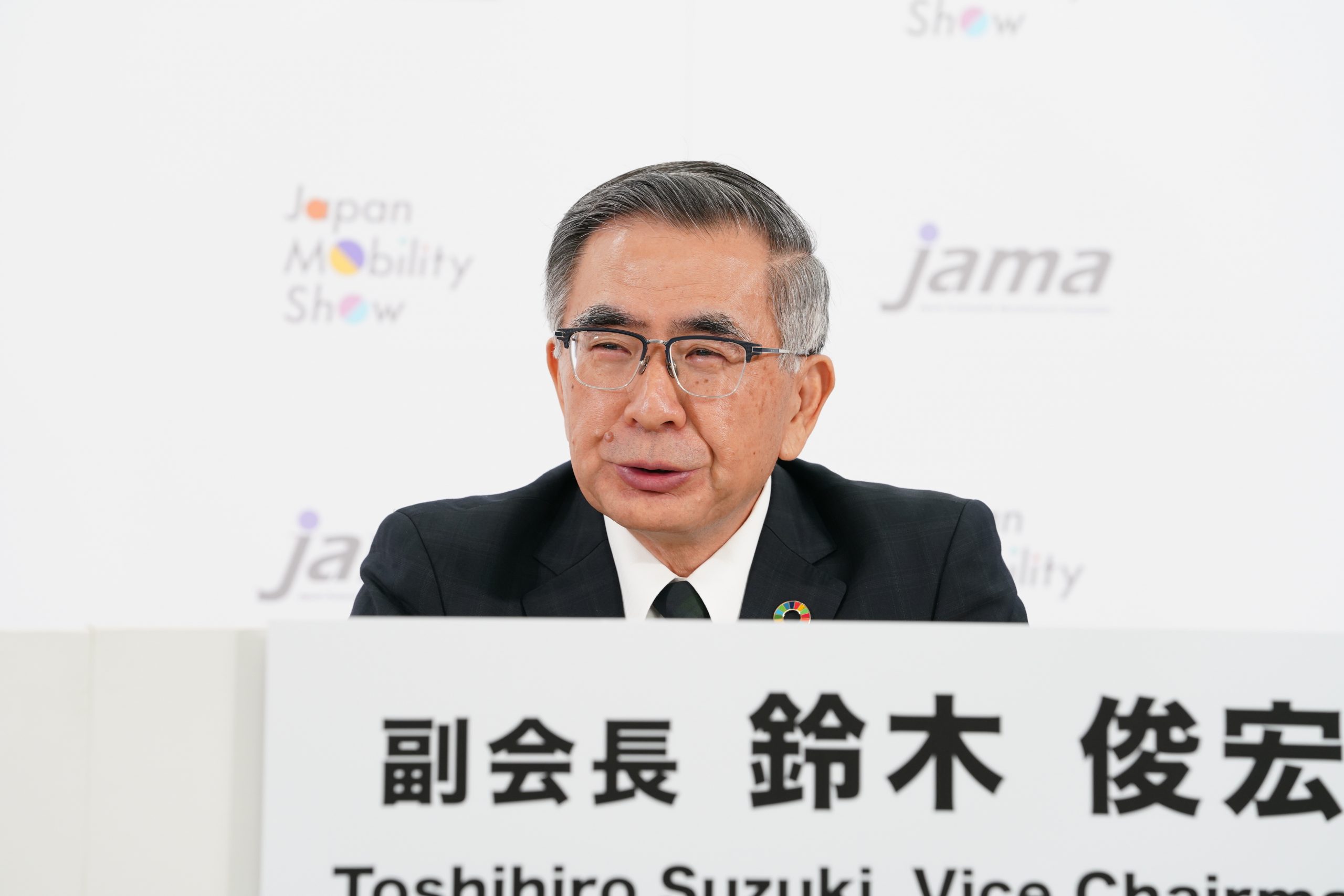
Starting as the All Japan Motor Show in 1954, renamed the Tokyo Motor Show in 1964, and evolving into the Japan Mobility Show in 2023—an event that now covers not only automobiles but a broad spectrum of mobility—the show has always been an important stage for Suzuki to embody the challenges of each era.
Today, we find ourselves in a once-in-a-century transformation of the automotive industry. With global affairs and the industrial landscape becoming increasingly uncertain, Suzuki is embracing the challenge of future mobility with bold, out-of-the-box thinking and the spirit of small car craftsmanship that we’ve nurtured since our founding. We aim to evolve and deliver exciting answers to the future.
Meanwhile, in my role as chair of JAMA’s Kei Car Committee, I’m pleased to announce that we will be hosting the “Kei Truck Market at Japan Mobility Show 2025” on November 8, at the Stone and Light Plaza in front of Tokyo Big Sight.
Participants from kei truck market groups across Japan—from Iwate in the north to Miyazaki in the south—will bring a wide variety of locally inspired and appealing goods. As part of our support for disaster recovery, we are also expecting participation from the Wajima Morning Market, which JAMA has been supporting.
More than 50 kei vehicles will line up at the venue, showcasing the unique vibrancy of a kei truck market and the full appeal of kei cars. We hope many of you will come and experience it for yourselves. Thank you very much.
SATO Koji, Vice Chairman
(President, Member of the Board of Directors, Toyota Motor Corporation)
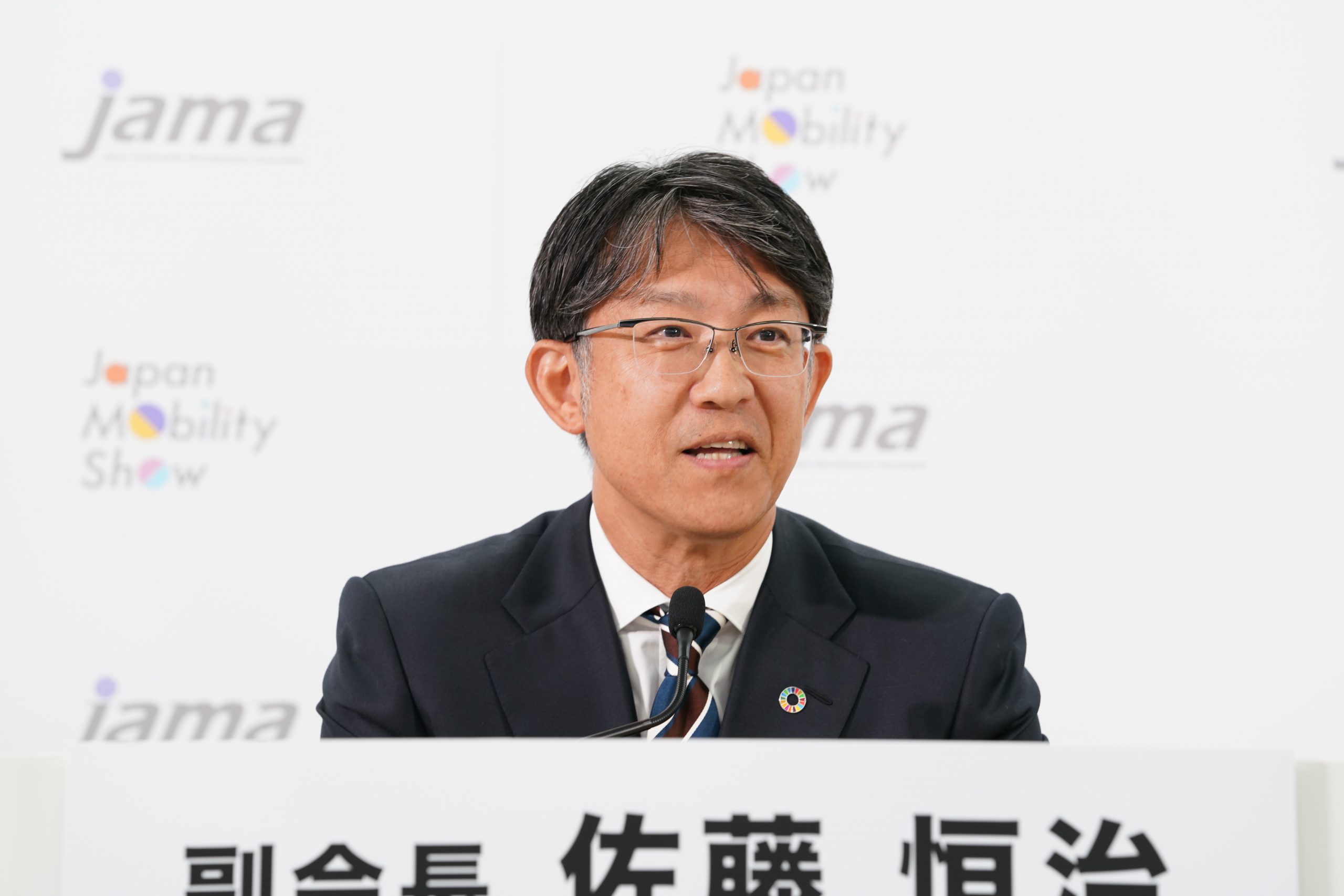
This will be the second full-scale edition of the Japan Mobility Show. In the inaugural edition, there were many exhibits showcasing visions of future mobility. However, one of the most prominent pieces of feedback we received was that visitors wanted to experience more of the direct appeal of the vehicles themselves.
In response, for this year’s show, we’ve put a lot of thought into the exhibits to ensure that we fully convey the inherent appeal of mobility itself.
There are emotions and excitement that can only be conveyed through the real, physical presence of vehicles—the vehicles themselves and the passion of the many car enthusiasts who gather around them. We hope this show will serve as a place where that passion can be communicated as a part of car culture.
So please, come to the venue, see the vehicles in person, and feel the energy for yourself. We hope it will leave you feeling inspired and uplifted.
Ivan Espinosa, Vice Chairman
(Representative Executive Officer, President and CEO, Nissan Motor Co., Ltd.)
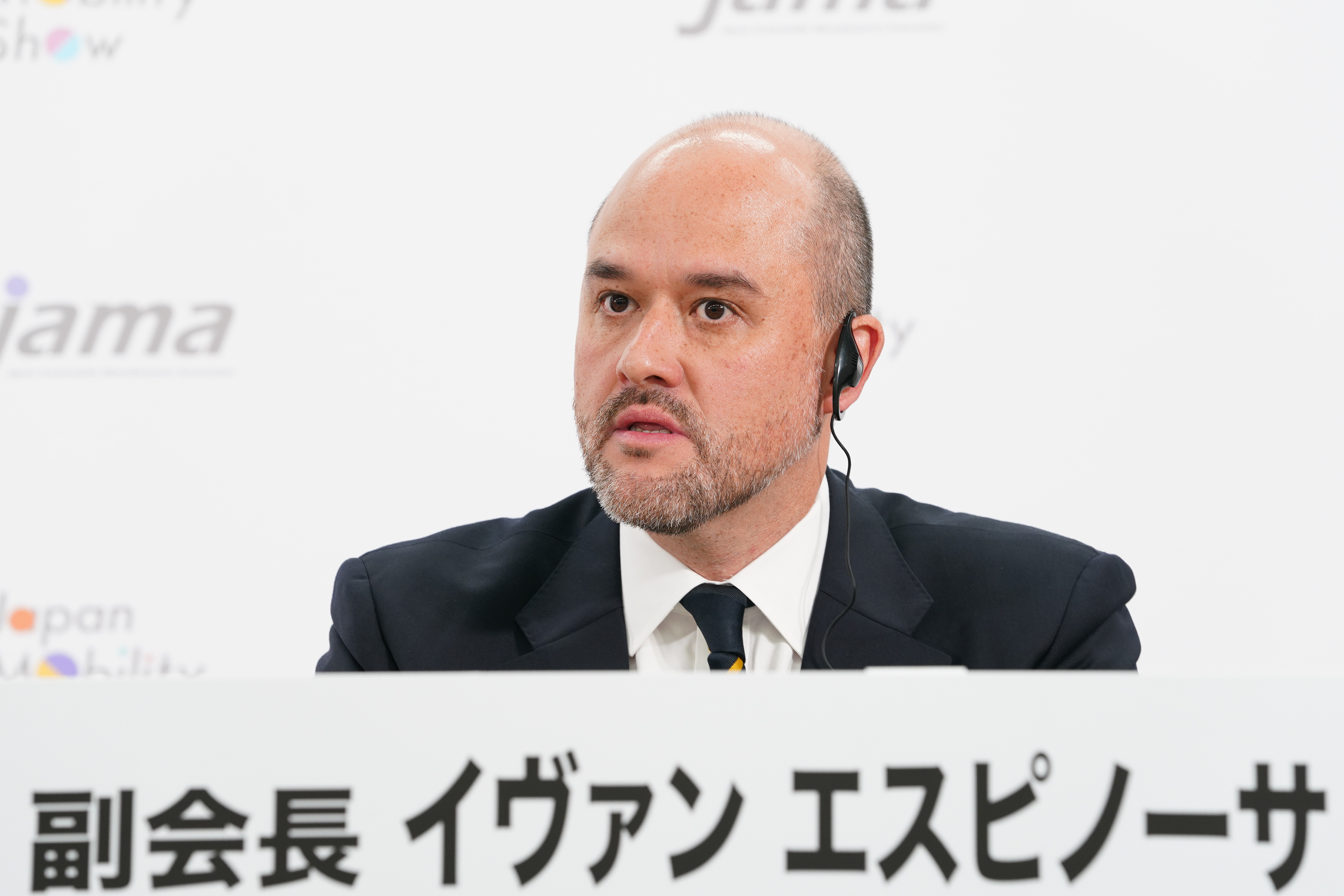
At this year’s Japan Mobility Show, I hope everybody from all generations will feel excitement, waku waku, about the future.
Each of us is at a different stage in life, and our visions of the future may differ. That’s what makes this show so special.
I encourage everyone not to limit themselves to just one company’s stand. Please take the time to explore many stands across the venue.
With a wide variety of displays and vehicles, you’re sure to discover a glimpse of the future that resonates with you.
For children of the digital generation—those dreaming of stepping out from the world of games into the real world—we will have the latest electric vehicles (EVs).
For active young families looking to create lasting memories in the mountains or by the sea, spacious and versatile minivans will be on display.
For those who want to casually expand their range of activity beyond the home, compact and easy-to-drive kei cars with advanced safety features are a perfect match.
And for those who are nearing the end of parenting and ready to embrace a new chapter in life, why not revisit a youthful dream with a sleek sports car?
At Japan Mobility Show, you’ll find vehicles that make your vision of the future even more exciting and tangible.
We also hope that everyone will be able to feel the potential that mobility—not just cars—can bring to our future.
JAMA, along with all participating companies, is working hard to ensure this show is enjoyable for everyone.
Of course, the Nissan stand will also feature many special attractions.
Please look forward to joining us in the fun!
I’m truly looking forward to meeting many of you at Japan Mobility Show 2025.
SHITARA Motofumi, Vice Chairman
(President, Chief Executive Officer and Representative Director, Yamaha Motor Co., Ltd.)
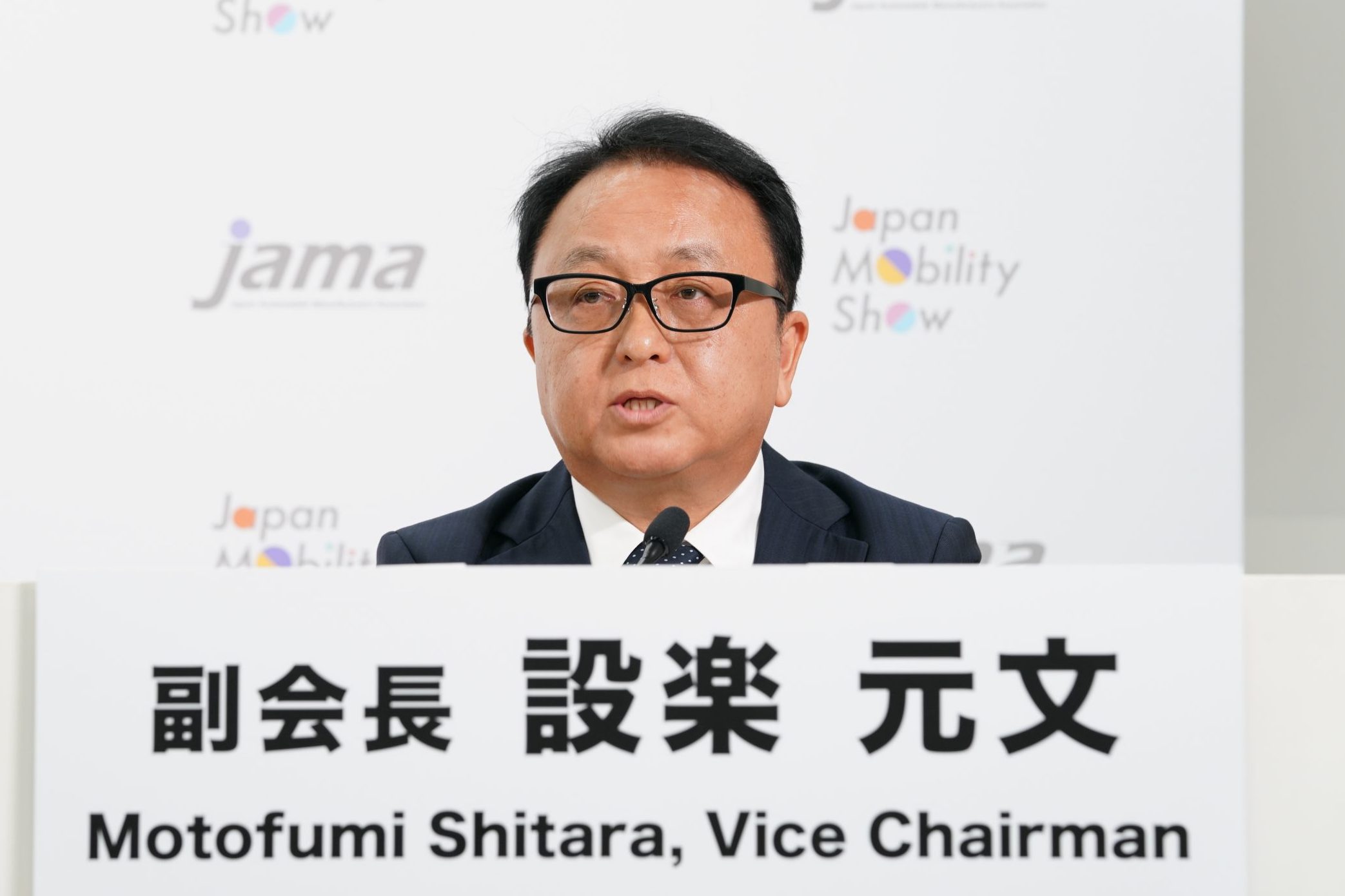
This spring marked a major turning point with the addition of new classification standards for Class 1 motor-driven cycles, i.e., gentsuki isshu. As this category is closely tied to everyday life in Japan, we as an industry are committed to revitalizing it—not only as consumer products, but also as a vital part of Japanese culture. At Japan Mobility Show 2025, Japan’s four major motorcycle manufacturers will jointly present a special program to help visitors better understand this important initiative.
Now, speaking specifically about Yamaha Motor, we are celebrating our 70th anniversary this year. Under the show’s theme of “Let’s explore an exciting future,” Yamaha will present a diverse range of exhibits. These include prototype models currently in development, based on our foundational principle of human-centered research, which guides our value creation.
Through this approach to people-focused manufacturing, we aim to inspire the spirit of joy and challenge. Together with Yamaha Corporation’s Music Division, we plan to create a showcase that appeals to the younger generation as well—featuring elements like VOCALOID and Hatsune Miku. This collaboration will highlight the Yamaha Group’s unique blend of technology, creativity, and culture.
We hope you’ll look forward to what we have in store.
MATSUNAGA Akira, Vice Chairman
(President, Japan Automobile Manufacturers Association, Inc.)
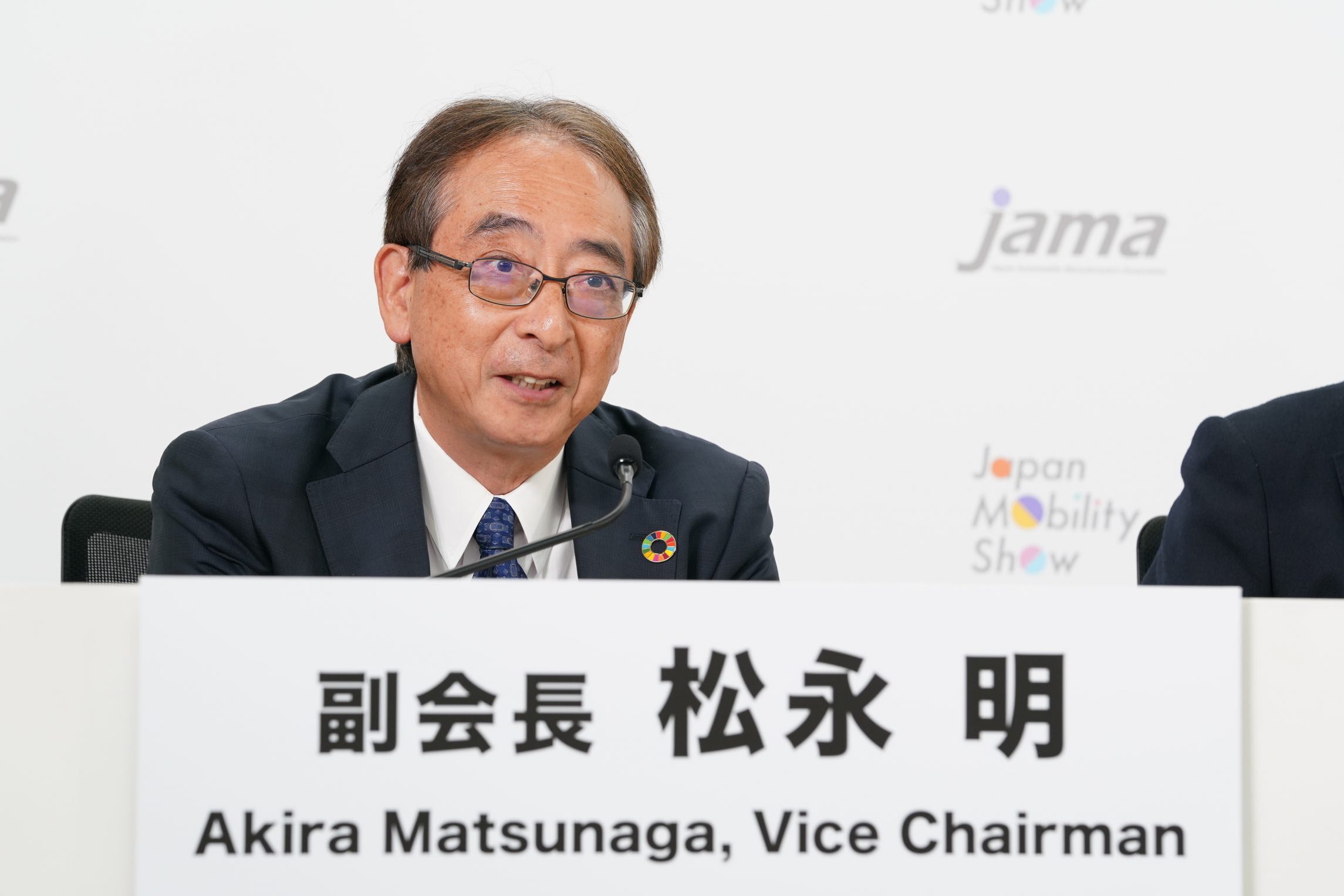
First of all, I would like to express my heartfelt gratitude to everyone who has worked so hard to make the Japan Mobility Show possible.
As you just heard from each of JAMA’s Vice Chairmen, who spoke with such passion, the Japan Mobility Show is not simply an event where individual companies display their own vehicles. Rather, JMS represents a unified “One Team” effort, where the entire Japanese automotive industry comes together to present a shared vision of the future.
When you look around the show’s venue, you’ll see a convergence of diverse and distinctive technologies from each company, and you’ll feel the excitement that cars and motorcycles generate all around you. I firmly believe that the possibilities of mobility—spanning GX (Green Transformation), DX (Digital Transformation), intelligence, and a wide range of services—will enrich and enhance our daily lives.
In other words, it’s through the power of Japanese manufacturing that we will bring this exciting future to life.
The automotive industry is now facing a once-in-a-century transformation. However, rather than viewing this as a challenge to be feared, we see it as a chance for growth, and we will continue to take on new challenges.
I strongly hope that the Japan Mobility Show will not only revitalize the automotive industry, but also serve as a powerful catalyst for the revitalization of Japanese industry as a whole—and the future of Japanese society itself.

